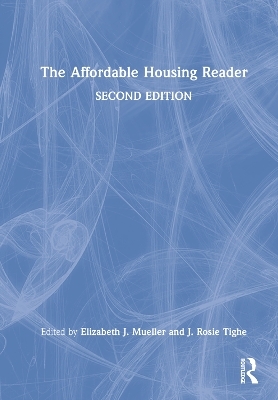
The Affordable Housing Reader
Routledge (Verlag)
978-0-367-28046-8 (ISBN)
The authors highlighted in this updated volume address themes central to housing as an area of social policy and to understanding its particular meaning in the United States. These include the long history of racial exclusion and the role that public policy has played in racializing access to decent housing and well-serviced neighborhoods; the tension between the economic and social goals of housing policy; and the role that housing plays in various aspects of the lives of low- and moderate-income residents. Scholarship and the COVID-19 pandemic are raising awareness of the link between access to adequate housing and other rights and opportunities. This timely reader focuses attention on the results of past efforts and on the urgency of reframing the conversation.
It is both an exciting time to teach students about the evolution of United States’ housing policy and a challenging time to discuss what policymakers or practitioners can do to effect positive change. This reader is aimed at students, professors, researchers, and professionals of housing policy, public policy, and city planning.
Elizabeth J. Mueller is an associate professor of Community and Regional Planning and Social Work at the University of Texas at Austin. J. Rosie Tighe is an associate professor in the Department of Urban Studies in the Levin College of Urban Affairs at Cleveland State University.
PART 1: CONFLICTING MOTIVATIONS FOR HOUSING POLICY 1. A citizen’s guide to public housing 2. The Housing Act of 1949 3. The evolution of low-income housing policy, 1949 to 1999 4. The Kerner Commission and Housing Policy 5. Advancing the right to housing in the United States: Using international law as a foundation PART 2: DEFINING AND MEASURING HOUSING PROBLEMS 6. What is housing affordability? The case for the residual income approach 7. How do we know when housing is “affordable”? 8. How affordable is HUD affordable housing? 9. Consequences of segregation for children’s opportunity and wellbeing 10. Home is where the harm is: Inadequate housing as a public health crisis PART 3: HOUSING TENURES 11. The grapes of rent: A history of renting in a country of owners 12. The sustainability of low-income homeownership: The incidence of unexpected costs and needed repairs among low-income homebuyers 13. Old wine in private equity bottles? Resurgence of contract‐for‐deed home sales in US urban neighborhoods 14. Making home more affordable: Community land trusts adopting cooperative ownership models to expand affordable housing PART 4: PROVISION OF AFFORDABLE HOUSING 15. The quadruple bottom line and nonprofit housing organizations in the United States 16. American murder mystery revisited: Do housing voucher households cause crime? 17. From public housing to public–private housing 18. What should be the future of the Low-Income Housing Tax Credit Program? PART 5: THE MEANING OF PLACE 19. Federal support for CDCs: Some of the history and issues of community control 20. W(h)ither the community in community land trusts? 21. CDCs in the right‐sizing city 22. Planning for empowerment: Upending the traditional approach to planning for affordable housing in the face of gentrification PART 6: PLANNING AND LAND USE 23. It’s time to end single-family zoning 24. Democracy in action? NIMBY as impediment to equitable affordable housing siting 25. Progress for whom, toward what? Progressive politics and New York City’s mandatory inclusionary housing 26. One size fits none: Local context and planning for the preservation of affordable housing PART 7: THREATS TO HOUSING SECURITY 27. Unaffordable America: Poverty, housing, and eviction 28. Metropolitan segregation and the subprime lending crisis 29. Inequities in long-term housing recovery after disasters 30. Rental housing assistance and health: Evidence from the survey of income and program participation PART 8: RACE AND FAIR HOUSING 31. Whiteness and urban planning 32. The experience of racial and ethnic minorities with zoning in the United States 33. Still paying the race tax? Analyzing property values in homogeneous and mixed-race suburbs 34. The duty to affirmatively further fair housing: A legal as well as policy imperative
| Erscheinungsdatum | 27.06.2022 |
|---|---|
| Zusatzinfo | 42 Tables, black and white; 21 Line drawings, black and white; 8 Halftones, black and white; 29 Illustrations, black and white |
| Verlagsort | London |
| Sprache | englisch |
| Maße | 174 x 246 mm |
| Gewicht | 1360 g |
| Themenwelt | Naturwissenschaften ► Biologie ► Ökologie / Naturschutz |
| Naturwissenschaften ► Geowissenschaften ► Geografie / Kartografie | |
| Sozialwissenschaften ► Soziologie | |
| ISBN-10 | 0-367-28046-9 / 0367280469 |
| ISBN-13 | 978-0-367-28046-8 / 9780367280468 |
| Zustand | Neuware |
| Haben Sie eine Frage zum Produkt? |
aus dem Bereich


